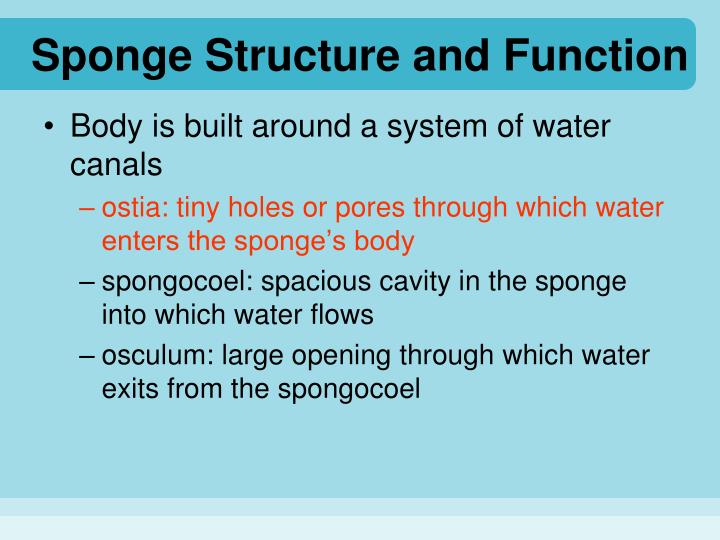

Epithelial cells around the osculum can contract enough to close the opening, but the process is slow (up to several minutes). The oscula are surrounded by cells and are bigger than the ostia. Most compound sponges have many oscula all over the body of the sponge. Simple vase-like sponges have a single large top opening, called the osculum through which water leaves the sponge. These pores are sometimes also referred to as ostia, and they provide openings for water, which carries planktonic food and oxygen, to enter the sponge body (Fig. Porocytes are narrow and elongated cells that connect the outside of the sponge to the inside cavity. 3.20 C), a special type of epithelial cell.

The tiny holes are actually the hollow insides of porocyte cells (Fig. All sponges are filled with the pores that give the phylum its name. These cells protect and enclose the sponge they can contract and shorten, moving the sponge body slightly. Image courtesy of Ewan ar Born, Wikimedia CommonsĮpithelial cells form a skin-like layer on the outer surface of a sponge (Fig. Many of the small sponges that hide under rocks or live on coral reefs are colored in vivid hues of red, yellow, orange, purple, crimson, sky blue, and ultramarine. Figure 3.18 shows some examples of different sponge morphologies. While some sponges, like the giant barrel sponges of the Caribbean, reach several meters in diameter, most sponges are small organisms that often go unnoticed on the reef or seafloor because they don’t look like other, more familiar, animals or noticeably move. Many sponge species grow upright in branching tree-like (Fig. A few species can even bore into hard surfaces like clam shells, coral skeletons, and rock (Fig. Some sponges grow in thin encrusting layers over surfaces (Fig.

All adult sponges are sessile, meaning they live permanently attached to rocks or other submerged objects and do not move about on their own. They are found in shallow ocean environments to depths as great as five kilometers (km). Although the majority of sponges are marine, some species live in freshwater lakes and streams. Sponges are simple invertebrate animals that live in aquatic habitats. The phylum Porifera comprises the sponges.


 0 kommentar(er)
0 kommentar(er)
